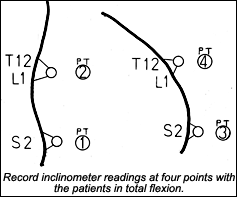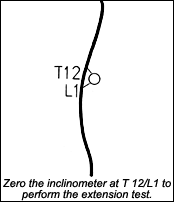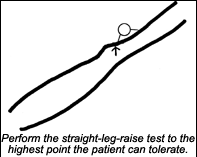New York's highest court of appeals has held that no-fault insurers cannot deny no-fault benefits where they unilaterally determine that a provider has committed misconduct based upon alleged fraudulent conduct. The Court held that this authority belongs solely to state regulators, specifically New York's Board of Regents, which oversees professional licensing and discipline. This follows a similar recent ruling in Florida reported in this publication.
Waddell's Method of Rating Lumbar Impairment
Gordon Waddell, MD, should be well-known to readers of this publication, as his writings are frequently referenced in rehabilitation articles. He was a speaker at the World Federation of Chiropractic's 6th Biennial Congress in Paris, France, May 21-26, 2001. An orthopedic surgeon, Dr. Waddell was appointed honorary professor of the department of orthopaedic surgery at the University of Glasgow in 1992. He has studied back pain, and how patients with back pain react to their injuries, for more than 20 years, and reported on the progress of his studies with approximately 100 scientific papers.
Dr. Waddell's studies found that in Western society, simple back strains disable more people than all the serious spinal diseases put together. Along with his co-researchers, he worked to devise a method of rating lumbar impairment suitable for routine use, which clinically evaluated chronic low back pain (LBP) patients in a way that related their pain, disability and physical impairment. In developing this method, 27 physical tests were investigated. By using three consecutive 20-patient reproducibility studies, four of the 27 original tests were found not to be reliable.
After using the 23 tests in 70 asymptomatic subjects and 120 patients with chronic LBP, eight tests were found to successfully discriminate LBP patients from normal patients. Although factor analysis failed to demonstrate an underlying statistical dimension of physical impairment, an empirical combination of the eight tests with simple cutoffs from normal subjects gave a scale that successfully discriminated 78 percent of patients and normal subjects, and explained 25 percent of the variance of disability, with a specificity of 88 percent and a sensitivity of 76 percent.
We can follow Waddell's progress in developing his method by analyzing the articles he has published on his work.

In 1998, Dr. Waddell wrote The Back Pain Revolution.5 Reed Phillips, DC, DACBR, MS, wrote one of the forwards of this book. In chapter eight, Dr. Waddell wrote about his method of physical impairment for LBP. He examined the different methods of rating physical impairment, starting with McBride in 1936, and worked up to the AMA Guides and the method of the American Academy of Orthopedic Surgeons. He had described his method in his 1991 book chapter and his 1992 Spine article, but in The Back Pain Revolution, he provided an illustration of each test that helps one understand the testing procedure.
Waddell's test me-thod is important because it helps clinicians evaluate backache patients who do not have significant structural deformities, fractures, surgical scarring or permanent neurological deficits - in other words - many of the patients the doctor of chiropractor with subluxations. It gives us an objective tool for clinical evaluation. The author reminds us his method is not a measure of anatomical or structural impairment; but rather, a measure of physical function; of functional limitations associated with pain and disuse. The exam sheet accompanying this article [see below] is provided for you to copy, so you can perform the Waddell lumbar impairment examination step by step. The only instruments you need to conduct the examination are a single inclinometer, a ruler and a skin marker or ballpoint pen.
The examination begins with the clinician making skin markings with the patient prone or standing, then guiding the patient through the warm-up exercises. Next are the standing tests. Have the patient stand in bare feet, heels together with knees straight and weight supported evenly on both legs, with the arms hanging at the sides and the patient looking straight ahead. If the patient has back spasms, have him or her as close to the upright position as possible.
Test 1: Total Flexion. Note the difference between the order of taking the four readings and the point number of the readings themselves. First, zero the inclinometer at S2 for the point-1 reading. Second, move the inclinometer to the point-two reading at T12/L1 and record this reading. Third, have the patient flex forward as far as possible, with the arms hanging straight toward the floor. Check to see that the patient's knees are straight and not flexed, then read the inclinometer at this flexed position and record as point 4. Fourth, move the inclinometer from T12/L1 to S2, as the patient remains flexed, and note and record the point-3 reading. Subtract the point-4 reading from the point-2 reading to determine total flexion. Anything less than 87 degrees is positive for impairment. (Pelvic flexion is a point-3 reading subtracted from a point-1; lumbar flexion is pelvic flexion subtracted from total flexion.)






Test 7: Active Sit-Up. With the patient's knees bent at 90 degrees and the soles of both feet flat on the table, instruct the patient to try to touch the knees and hold that position as long as possible. If the patient cannot hold the knees for support, he or she can touch toward or to the knees. The doctor holds the patient's feet down while counting to five silently. An inability to hold the sit-up for five seconds is positive for impairment. Waddell states this is also a strength test.

Scoring is based on how many of these seven tests are positive. Finally, note if the patient has any of the visual defects listed at the bottom of the exam sheet.
Exam Sheet for Lumbar Impairment - Waddell's Method Check each blank as each task or test is completed and/or test result is recorded. A. Make Three Markings on Patient at: (patient prone and relaxed or standing) B. "Warm-Up" the Patient: (patient standing) C. Perform the Test for Impairment: Patient Standing Erect Test # 1: Flexion Testing 1. Point 1 @ S2 set inclinometer at zero _______ (Calculate Total Flexion)
Test # 2: Extension Testing 1. Set inclinometer @ zero in neutral standing position @ T12/L1 _______
Test # 3: Lateral Flexion Testing 1. Set inclinometer @ zero on side of ruler placed from T9 to T12 _______
Patient Prone (head straight down in headpiece; arms straight down and relaxed) Test # 4: Palpation of T12 to S1 Are spinout processes tender? _______
Supine Tests Test # 5: SLR inclinometer @ zero, just below tibial tubercle; perform SLR to highest point patient will tolerate
Test # 6: Bilateral active SLR - ask patient to lift legs 6" off table; hold 5 sec.
Test # 7: Active sit-up - knees bent 90 degrees; fingers toward or touch knees while doctor holds feet flat. _______
D. Rate the Patient's Degree of Impairment: Score = _______ of 7 (Note if patient has lumbar lordosis, thoracic kyphosis, pelvic tilt or lumbar list.) |
In summary, Waddell and his associates have developed a new method for rating impairment that has been accepted and published in peer-reviewed literature, providing a different way to find impairment when traditional examination may be negative. This objective clinical evaluation measures physical limitation associated with pain. The Back Pain Revolution contains additional information about the exam, but the reader will find that Waddell did not make an exam sheet for the reader to copy and use. Hence, this article was written to bring Waddell's important contribution of a new method of impairment rating to the profession's attention.
References
- Waddell G, Main CJ: Assessment of severity in low back disorders. Spine 1984;9:204-208.
- Waddell G: Clinical assessment of lumbar impairment. Clin Orthop 1987;221:110-120.
- Waddell G, Allan, DB, Newton M: Clinical evaluation of disability in low back pain, Chap 10. The Adult Spine: Principles and Practice. Edited by J. Frymoyer, New York, Raven Press, 155-168, 1991.
- Waddell G, Somerville D, Henderson I, Newton M: Objective clinical evaluation of physical impairment in chronic low back pain. Spine 1992;17:617-628.
- Waddell G. The Back Pain Revolution. Edinburgh: Churchill Livingstone, 1998.
Hal M. Miller, DC, DABCO
Elkhart, Indiana



